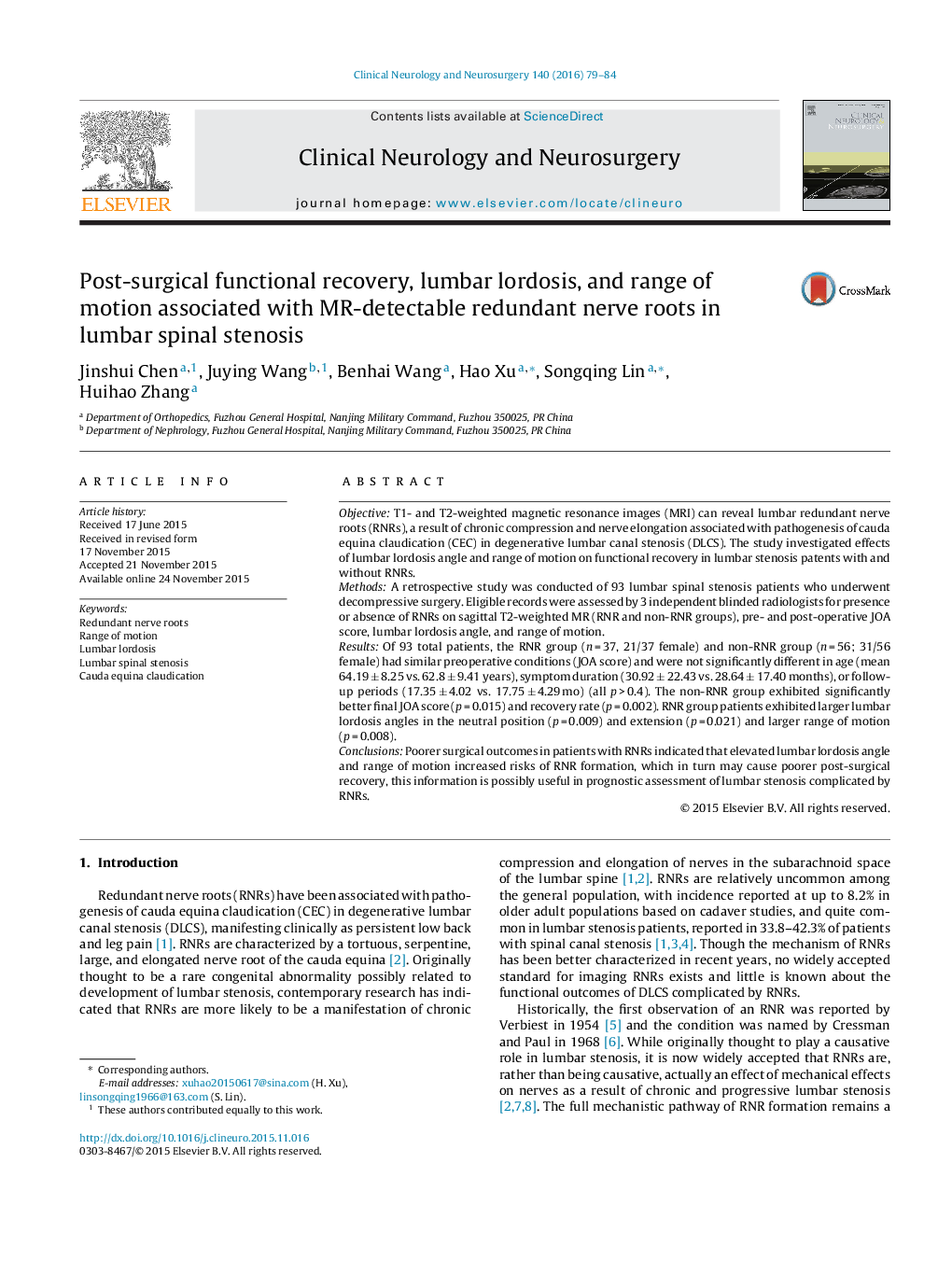| کد مقاله | کد نشریه | سال انتشار | مقاله انگلیسی | نسخه تمام متن |
|---|---|---|---|---|
| 3039675 | 1579682 | 2016 | 6 صفحه PDF | دانلود رایگان |

• To investigate effects of lumbar lordosis angle and range of motion on functional recovery.
• To explore relationship between RNRs apparent on MRI images and clinical measures.
• Elevated lumbar lordosis angle and range of motion increased risks of RNR formation.
ObjectiveT1- and T2-weighted magnetic resonance images (MRI) can reveal lumbar redundant nerve roots (RNRs), a result of chronic compression and nerve elongation associated with pathogenesis of cauda equina claudication (CEC) in degenerative lumbar canal stenosis (DLCS). The study investigated effects of lumbar lordosis angle and range of motion on functional recovery in lumbar stenosis patents with and without RNRs.MethodsA retrospective study was conducted of 93 lumbar spinal stenosis patients who underwent decompressive surgery. Eligible records were assessed by 3 independent blinded radiologists for presence or absence of RNRs on sagittal T2-weighted MR (RNR and non-RNR groups), pre- and post-operative JOA score, lumbar lordosis angle, and range of motion.ResultsOf 93 total patients, the RNR group (n = 37, 21/37 female) and non-RNR group (n = 56; 31/56 female) had similar preoperative conditions (JOA score) and were not significantly different in age (mean 64.19 ± 8.25 vs. 62.8 ± 9.41 years), symptom duration (30.92 ± 22.43 vs. 28.64 ± 17.40 months), or follow-up periods (17.35 ± 4.02 vs. 17.75 ± 4.29 mo) (all p > 0.4). The non-RNR group exhibited significantly better final JOA score (p = 0.015) and recovery rate (p = 0.002). RNR group patients exhibited larger lumbar lordosis angles in the neutral position (p = 0.009) and extension (p = 0.021) and larger range of motion (p = 0.008).ConclusionsPoorer surgical outcomes in patients with RNRs indicated that elevated lumbar lordosis angle and range of motion increased risks of RNR formation, which in turn may cause poorer post-surgical recovery, this information is possibly useful in prognostic assessment of lumbar stenosis complicated by RNRs.
Journal: Clinical Neurology and Neurosurgery - Volume 140, January 2016, Pages 79–84